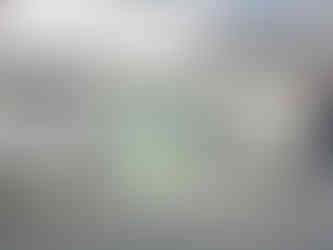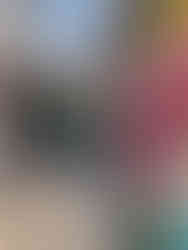Our Asian Adventure: Phnom Penh, Part 3 - a locals’ wet market and a neighbourhood saved by art make for a great day
- debbiemanderson1
- Mar 29
- 7 min read
Updated: Mar 30

On our third day in the mesmerizing city of Phnom Penh, ‘Jackson’ of Urban Forage (urbanforage.co) Viator Tours met us at our hotel bright and early, promising two breakfasts and some great street art. I was ‘all in’. Food and street art - two of my favourite things. We were joined by a traveller from France. It was a great way to end our visit after learning of the trauma of Phnom Penh in the killing fields and genocide museum, viewing some colourful and full-of-character temples, exploring the ostentatious royal palace grounds, and venturing off the beaten path. If you’d like, please refer to my previous blog posts about our adventures in Phnom Penh.
Let me say a word first about the delightful ‘Jackson’. He shared that at about age eight, his family moved into Phnom Penh from the countryside and, if I understood him correctly, lived with no adequate shelter, no education, and no basic necessities. An NGO (non-governmental organization) from France intervened. They provided housing, food, and education. Jackson advised that he then attended school up until grade 9 but was always interested in the service industry so took two more years in a vocational college specializing in hospitality. He worked in hotels before becoming a tour guide for Viator. He is now married and has two children who, he pointed out, attend private school and will grow up knowing a different standard and way of life. He said that help arrived for him, but “you have to work hard.” What a great story of resilience and optimism and changing the next generation. He was smart, creative, and insightful.
It was time for another tuktuk ride. Will I ever get tired of riding in tuktuks?

Our first stop was at the traditional Boeung Keng Kang Market. Although the area might be one of Phnom Penh’s more trendy areas with high rises and modern cafes, the BKK is a locals’ favourite and less touristy than the Central Market we had visited the day before. Jackson escorted us straight to the ‘wet market’, the food, produce, and food stall section. If ever we have seen a market, this is the ultimate - local, down to earth, homegrown, authentic, and with too-many-photo-ops-to-count.

We wandered the aisles, snapping picture after picture of just-cut flowers and produce, fish still wiggling, eels swimming, fresh chickens hanging, and so many other things we had no name for. Fish stalls butted next to children’s clothes which butted next to produce stalls which butted next to a manicurist or hairdresser. Fish guts splashed on my leg as I snapped a photo. It is definitely a one-stop market.
I’ll let the pictures do the talking:
After meandering the aisles, it was time for breakfast number one, a traditional bowl of rice noodles, caramelized pork, spring rolls, vegetables and mint, ‘Banh Sung’, that we would probably eat for supper in North America. You have to set your own practices and preconceived notions aside. It was put together in a little booth that has passed down through several generations. Our noodle bowl was accompanied by authentic cold Cambodian coffee and, yes, the two combined were delicious. The ‘girls’ handled the noodle dishes while mama made the iced coffees.

To chase the noodle bowl, next up was a traditional Cambodian donut stand, managed by the ‘donut lady’. In fact, she had to close the next day as she had an order for 1,000 donuts which would take her over four hours to make. We sampled three donuts. We had to vote on our favourite - mine was “noum kong” or “wheel pastry”, deep fried rounds made with rice flour and coated with caramelized sugar and sesame seeds. Delicious.

The Central Market we had visited the day before and the BKK are just two of the many markets in Phnom Penh. Other popular ones for tourists are the Russian Market (or Tuol Tom Poung Market), the Orussey Market, and the Night Market. I’d rather hunt down the locals’ markets like BKK - they’re far more interesting, A fun exercise, if you had endless time, might be to sample all the markets in Phnom Penh and decide on your favourite. It all depends on what atmosohere and experience you are seeking.
With full stomachs, Jackson steered us towards the Boeung Kak Lake/Street 93 area for a taste of Phnom Penh’s street art scene and to learn how art has helped to revitalize a neighbourhood. First the story of Boeung Kak Lake. There was once a lake here, surrounded by small villages and residents who made their living off fishing and harvesting seaweed. As well, the area was once a haven for backpackers, so there were businesses, bars, and hostels. But in 2010, the lake was filled in by developers who wanted to build higher class housing, and they offered the local residenrs minimal compensation to be relocated. With no means to fight, they had little choice but to accept the meagre offer. As Joni Mitchell sings, “they paved paradise, put up a parking lot”. You might want to research the history of Boeung Kak Lake as this business deal was ‘complicated’. The lake and business dried up, and the area deteriorated to drug use, poverty, and crime.
But in 2014, two French women kickstarted a campaign to clean up the neighbourhood and make it ‘artsy’. They opened their own business, a French cafe, and encouraged artists to brighten the walls of the neighbourhood with murals. Businesses and restaurants started to return, houses are painted, flowers pots are everywhere, and the neighbourhood is pleasant and tranquil. A good article is ‘Where to Find Street Art in Phnom Penh by Travel Lush.
The Lightness of Being by Anthea Missy:

Remember that the aim of street art is to tell a story or make a statement, especially if you are not free to speak publicly about some issues. Jackson told us that many of the murals on Street 93 were in protest of the Boeung Kak Lake sale and the removal of villages and residents against their will. Street art might be beautiful or fun or comical on the surface, but you have to Look for the subversive meanings.
Jackson explained that the murals of women’s faces are particularly telling, showing anger, inner strength, focus, and grace, especially this one of a female boxer:

Or this one:

Street 93 scenes:
Do you remember the Swiss paediatrician I mentioned in my last blogpost who started a foundation for childrens’ hospitals to treat children for free after Princess Kantha Bopha died at a young age? There are now five of these hospitals under the Kantha Bopha Foundation in Cambodia. Jackson showed us this mural on the wall of one hospital which he just happened to have to attend several times as a child. Now, he donates a portion of money each month as his ‘thanks’ and civic duty to keep the hospital free for children. Like I said, Jackson really has his life rogether after difficult beginnings.

Street 240 1/2 is a little curvy alleyway and another adorned with street art. The area is also known for cafes, bars, little boutiques, and night life.
The alley pays homage to some famous Cambodian music artists:
But the most prominent mural is another strong woman, looking onwards and upwards:

In countries which might still have a ways to go with ‘openness’, it could be a bit harder to find the street art, but that might make the hunt all the more fun. It would certainly be a great theme day in Phnom Penh. Next time . . .
Our next stop was a different type of art, an upscale incubator art gallery on Street 240, The Gallerist, where locals are encouraged to create works of art for sale in the gallery. The Gallerist website states: “In the tapestry of Cambodian society, art emerges not merely as a form of beauty but as a dialogue for memory and healing, fostering a deeper connection to cultural identity and shared experiences”. The art here was incredible and, had we room to take anything back to Canada, we would have been tempted to make a purchase.
Our almost final stop was for second breakfast, rice and pork, ‘Bay sach chruk’, another Cambodian tradition, at a little roadside stand. Jackson said that the stand would be packed with locals at lunchtime. It was washed down with sweet tea and, again, was delicious.



Lastly, we were in for a surprise stop. We all took guesses as to what it would be but didn’t quite get it. Then Jackson lead us to the Temple of Cacao for the best Cambodian chocolate, made from local coffee beans crafted in Siem Reap. We got to sample all the flavours and then choose our favourite bar to take away. I chose ginger, and my partner chose salted. (I also had to take away a chocolate brownie which, without a doubt, is the finest brownie I’ve eaten; and next to coffee, I’ve had my share of chocolate.)
This is a woman with a purpose . . .

My travelling companions choosing their chocolate - looks like the most difficult decision they’ve had to make lately:

That ended a delightful day in Phnom Penh, one of our best travelling days. The delicious five-star food that came from a few simple ingredients in little old food stalls and the juxtaposition of street murals with high-end art are further symbols of a wonderfully dichotomous city.
That also ended our three day visit to this mesmerizing city where they remember the traumatic past but where the tuktuks and motorcycles dance with the cars and the intergenerational food stalls contrast with the highrises and the people in the parks are walking and exercising and eating. It’s one lovely chaotic ballet. I love this city and country.
Thanks for following our journey. Next, we are on our way to Singapore which is worlds away from Cambodia. Please check back in a few days.


























































































































Comments